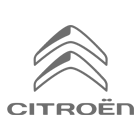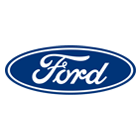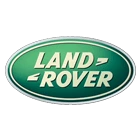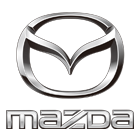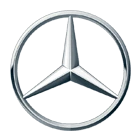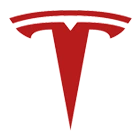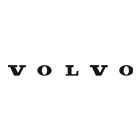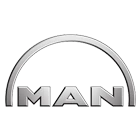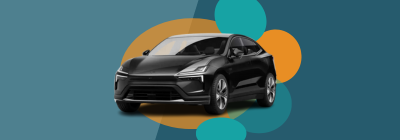Fiat Ducato Van Leasing
The Fiat Ducato, a large van, exemplifies versatility and reliability in the commercial vehicle market. Over the decades, it has become a favoured choice for both businesses and individuals. As an alternative to other large vans like the Citroen Relay and Ford Transit, the Ducato effortlessly meets a wide range of transportation needs.
Free Nationwide Delivery
We deliver to most places in mainland UK
Road Tax Included
Our lease deals come with road tax included
Consultative Approach
No pressure selling just honest advice
Fiat Ducato Lease Deals
View our latest Fiat Ducato lease deals below.
Vehicle
Monthly Lease
Fiat Ducato Large Van 35 L2 2.2 Multijet 140 H1 Van
£387.32
exc VAT
View Deal
Fiat Ducato Chassis Cab 35 Maxi L2 2.2 Multijet 140 Chassis Cab
£389.31
exc VAT
View Deal
Fiat Ducato Chassis Cab 35 Maxi L3 2.2 Multijet 140 Chassis Cab
£393.82
exc VAT
View Deal
Fiat Ducato Large Van 35 L2 2.2 Multijet 140 H2 Van
£396.74
exc VAT
View Deal
Fiat Ducato Large Van 35 L3 2.2 Multijet 140 H2 Van
£404.25
exc VAT
View Deal
Fiat Ducato Chassis Cab 35 Maxi L3 2.2 Multijet 140 Crew Cab Chassis
£405.35
exc VAT
View Deal
Fiat Ducato Large Van 35 L3 2.2 Multijet 140 H2 Window Van
£409.05
exc VAT
View Deal
Fiat Ducato Large Van 35 Maxi L3 2.2 Multijet 140 H2 Van
£410.02
exc VAT
View Deal
Fiat Ducato Large Van 35 L3 2.2 Multijet 140 H3 Van
£412.22
exc VAT
View Deal
Fiat Ducato Large Van 35 L2 2.2 Multijet 140 H2 Van Auto
£417.42
exc VAT
View Deal
Fiat Ducato Large Van 35 Maxi L4 2.2 Multijet 140 H2 Van
£417.51
exc VAT
View Deal
Fiat Ducato Large Van 35 L3 2.2 Multijet 140 H2 Van Auto
£424.91
exc VAT
View Deal
Fiat Ducato Van Leasing
The Fiat Ducato impresses with its remarkable capacity, boasting an impressive 2.2-tonne payload capability coupled with a generous load volume of up to 17m³. This remarkable combination of payload and load volume makes the Ducato a versatile and efficient solution for a wide range of transportation needs. Whether it's carrying heavy cargo or bulky items, the Fiat Ducato ensures that businesses can maximise their productivity and efficiency while enjoying ample space for their goods.
Additionally, the Fiat Ducato offers a range of engine options to suit various performance and efficiency requirements. The Fiat Ducato commonly features diesel engines available in different power outputs. Although, for those considering an electric van, the new Fiat e-Ducato has a range of up to 261 miles (WLTP) and quick charging capabilities. The Fiat e-Ducato represents a bold step forward in the realm of electric commercial vehicles, offering businesses a sustainable and efficient transportation solution.
In addition to its practicality and performance, the Fiat Ducato prioritises comfort and convenience for both drivers and passengers. The cabin design features intuitive controls, ample storage compartments, and modern connectivity options, enhancing the overall driving experience. Furthermore, the Ducato's reputation for reliability and durability is well-established, making it a trusted partner for businesses that depend on their vehicles day in and day out. So, if you’re seeking a large van for your transportation needs, definitely consider Fiat Ducato leasing.
View our current Fiat Ducato lease deals or email us at [email protected] for more information. At GB Vehicle Leasing, we aim to make leasing a van as straightforward as possible for our customers, whether you’re an individual or business lease customer.
Part Exchange Your Old Vehicle
Need to sell your old vehicle? Part-exchanging eliminates the hassle of selling your old vehicle privately and dealing with potential buyers. Currently, we're one of the very few brokers that will accept a part exchange!
Fiat Ducat FAQs
When was the Fiat Ducato first introduced?
The Fiat Ducato was first introduced in 1981. It was jointly developed by Fiat, Peugeot, and Citroen as part of a collaboration between the three automakers. The Ducato was designed as a large van, offering a high payload capacity and versatile interior space.
Over the years, the Fiat Ducato has undergone multiple updates, improvements, and generations to keep up with changing market demands and safety regulations. It has remained a popular choice in the large van segment, and its long history of successful use in commercial fleets has solidified its position as a reliable and trusted work vehicle.
How does the Fiat Ducato compare to the Fiat Doblo?
The Fiat Ducato and the Fiat Doblo are two different vans designed for different purposes and target markets. Firstly, the Ducato is a larger van, typically classified as a large panel van. It offers a more generous cargo capacity and higher payload. Also, the Doblo is more commonly used for urban deliveries and smaller-scale commercial uses compared to the Ducato.
Both vans are known for being versatile and reliable. However, the Doblo's smaller size limits its capacity compared to the Ducato. Being a larger and more capable van, the Ducato typically comes with a higher price tag than the Doblo. It may require a larger budget to lease.
Who can lease a Fiat Ducato?
Both individuals and businesses have access to Fiat Ducato leasing. If your business operates as a limited company, partnership, sole trader, or LLP, you might be eligible for a business van lease agreement. You will be required to complete a finance application and obtain approval from a lender. Alternatively, individuals can lease a Fiat Ducato through a personal van lease agreement, rather than through a business. To explore the options available to you, please get in touch with our commercial specialists and we'll see how we can assist you.
How does the Fiat Ducato compare to the Citroen Relay?
The Fiat Ducato and the Citroen Relay are sister vans that share many similarities due to their joint development. Both vans offer a robust and versatile platform, making them popular choices for businesses seeking large panel vans for commercial use. Additionally, both vans have a reputation for reliability and durability. The decision between the two would likely come down to individual brand preference, availability, pricing and equipment options offered.
Does a Fiat Ducato lease come with maintenance included?
Vehicle maintenance can be added as an optional extra. If you would like to know how much a maintenance package will cost on a particular van, our leasing consultants are more than happy to look into this for you.
How much does it cost to lease a Fiat Ducato?
The cost of leasing a Fiat Ducato varies depending on factors like the particular trim level, lease term, and mileage allowance you opt for. Nonetheless, Fiat Ducato leasing offers an economical and convenient way to enjoy a brand-new van. To discuss our current Fiat Ducato lease deals, get in touch with our van leasing specialists on 0161 667 5338.
Latest Leasing News and Reviews
Keep up to date with the latest leasing news from GB Vehicle Leasing.



